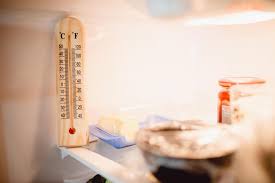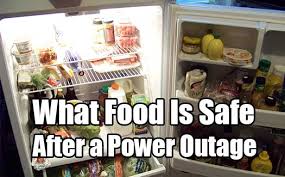
Maureen Rowan Murphy, Manager Consumer Trends, Nutrition and Lifestyles
Loss of electrical power here in the Northeast due to seasonal storms and high winds is a year-round threat. You can reduce the risk of foodborne illness and minimize food loss by following the recommendations outlined below by USDA. Before a Power Outage Occurs- Stock up on shelf-stable foods such as canned foods, bottled juices, canned milk and milk products requiring no refrigeration.
- Keep appliance thermometers in both the freezer (0º or below) and the refrigerator (40º or below) to insure that food is being stored at safe temperatures.
- Keep a few frozen containers of water and/or gel packs in the freezer to help keep food cold if the power goes out.
- Group foods together in the freezer, which will help foods stay colder longer in the event of a power failure.
- Freeze refrigerated items like fresh meats, poultry and leftovers that you do no not need immediately as this helps keep them at a safe temperature longer.
- Keep the refrigerator and freezer closed to maintain temperature.
- A full freezer will maintain temperature for about 48 hours (24 hours if half-full) as long as the door remains closed.
- Refrigerated food will stay safe for 4 hours. Have coolers on hand if the power is expected to be out longer.
- Buy dry or block ice to keep the refrigerator as cold as possible if the power is going to be out for a prolonged period of time. Fifty pounds of dry ice should keep an 18 cubic foot, fully stocked freezer cold for two days.
- Contact family and friends living close by to see if they have operational freezer space you can use if needed.
- If you plan to eat refrigerated or frozen meat, poultry, fish, or eggs while they are still at safe temperatures, it is important that each item is thoroughly cooked to a safe minimum internal temperature to ensure that any foodborne bacteria that may be present are destroyed.
 Once Power Is Restored
Which foods may be safely used or refrozen in the event of a power outage? Each situation is different, as are the conditions existing in individual refrigerators and freezers.
Never taste foods you think might be unsafe. Most food poisoning bacteria are tasteless, colorless, and odorless. When in doubt, throw it out!
Once Power Is Restored
Which foods may be safely used or refrozen in the event of a power outage? Each situation is different, as are the conditions existing in individual refrigerators and freezers.
Never taste foods you think might be unsafe. Most food poisoning bacteria are tasteless, colorless, and odorless. When in doubt, throw it out!
- Check the temperature in the refrigerator and freezer. If they’re still at safe temperatures your food is still fine.
- Refreeze food that still contains ice crystals or is at 40°F or below.
- Some items may suffer loss of quality, texture and flavor.
- Meat, poultry, fish, eggs and egg substitutes –raw or cooked
- Milk, cream, yogurt and other dairy products
- Opened baby formula
- Soft cheeses and shredded cheeses
- Casseroles, stews or soups
- Lunch meats and hot dogs
- Opened cream-based salad dressings
- Custards, chiffon or cheese pies
- Cream-filled pastries
- Cooked pasta
- Refrigerator and cookie doughs
- Cooked or cut produce
- Hard cheeses
- Grated Parmesan, Romano or combination (in can or jar)
- Butter or margarine
- Opened canned fruits and fruit juices
- Jelly, relish, mustard, ketchup, olives and pickles
- Worcestershire, soy, taco, barbecue and hoisin sauces
- Peanut butter
- Opened vinegar-based dressings
- Bread, rolls, cakes (except cream-cheese frosted or cream-filled), muffins, quick breads, and tortillas
- Breakfast foods (waffles, pancakes, bagels)
- Fresh mushrooms, herbs and spices
- Uncut raw fruits and vegetables
